3 Advanced Trading Techniques that Pro Traders Use to EXIT Trades with more profit
What are some advanced profit booking techniques that can make you better at trading? If you have watched other videos on the Trading Rush Channel, you know I recommend using a fixed stoploss and profit targets for beginner traders. But at some point, once you gain enough experience in trading, you should probably switch to different trade management techniques that have higher probability of making more money. In this video we are going to see some of those trading techniques, so you can make more money as well.
If you have watched the small account challenge series, and the liive trading videos on this channel, you know I use very different profit booking methods in those series. In the small account challenge series, where we tried to double the Trading account, I mostly used the fixed profit target. But in the liive trading videos, I had no profit target, instead, I was trailing the stoploss candle by candle. That’s because sometimes it is better to use a profit booking technique based on the market movement.
For example, lets say you have found a stock or a forex pair that is moving strongly in one direction because of a strong catalyst. When the price gave a pullback in this strong up trend, you found a trading opportunity and take a trade according to your entry strategy. Normally, in a fixed stoploss and profit setup, you will book a limited profit. But in this example, since we know that the price has potential to move strongly in the upward direction, we can simply avoid setting a profit target, and move the stoploss below the candle that is making the new high. This aggressive stoploss trailing technique was used in the liive trading videos. This strategy is most effective when the price is less noisy.
For example, lets say you enter at this candle according to your trading strategy. As you can see, there is less noise on this chart and the price movement is easier to read. Since we know that the price movement is good and has a potential to go higher, we can set the stoploss just below the entry candle if it is big enough, and trail the stoploss below the candle that is making the new high.
Here, after taking the entry, you can see that price went sideways. Since none of the candles made a new high, we cannot trail the stoploss. When the candle makes a new high, we can modify the stoploss, and set it just below the candle that made the new high. Now, if the price reverses from this point, you are only going to lose a small amount of money compared to your original stoploss. When the next candle made a new high, your stoploss is in profit. From now on, the trade is not going to make a loss.
These kinds of trades have potential to make a big profit. In this example, the stoploss was hit when the candle broke the low of the previous candle. The reward to risk ratio on this trade was 4.5 to 1. In other words, you made a profit that is 4.5 times more than your initial risk. I have used the same strategy in the liive trading videos, and have gotten multiple green days in a row because the potential loss per trade was reduced as the trade went higher in the entry direction.
But what if the price movement is noisy? How can you book a big profit? Well, if you think that the price has potential to move in one direction, you can simply use the ATR indicator to set the stoploss. I have already made a detailed video about it. Check it out if you want.
If we apply the ATR stoploss on our previous example, you can see that we would have exited the trade at a much higher point. But this doesn’t mean you would have gotten a better reward to risk ratio than the previous trade. That’s because the initial stoploss in this example was way bigger than the last stoploss. When we trailed the stoploss candle by candle, we got a 4.5 to 1 reward to risk ratio. With the ATR stoploss however, we only got 4.2 to 1 reward risk ratio. This doesn’t mean that one is better than the other. One is made for less noisy price movements, and other one works by taking price volatility into consideration.
But what if you don’t want to continuously stare at the chart. Well, you can simply take partial profit as the trade moves higher.
Lets look at an example. Here, lets say the price has potential to move higher upto the clearly visible resistance level. But between the entry and the strong resistance level, there is another resistance level. We don’t know if the price is going to reverse from this weak resistance level or not. So instead of guessing, you book partial profit, and move your stoploss to breakeven. In this example, you exit 25 percent of your trade when the price reaches 1 to 1 reward risk ratio, and move the stoploss to breakeven. This way, even if the trade goes in the opposite direction after touching the weak resistance, you will not lose money, because you have already booked a small profit and your stoploss is at the breakeven point. But, if your trade reaches your next profit target, you will book a big profit, just like we did in the previous 2 examples.
Instead of booking 25 percent partial profit, some traders also like to book 50 percent or 75 percent profit when the trade reaches 1 to 1 reward risk ratio. The choice depends on the probability of price making a big move in your favor. If you think price has a higher chance of reaching higher reward risk ratios because of a strong catalyst, it is better to only book 25 percent at the first profit target and let the rest ride. If you think there is a strong resistance that can reverse the price in between, it is probably a good idea to take more than 25 percent off at the first profit target.
So here are some key takeaways you should note.
Number 1. When the price is trending and if the price move is cleaner, trailing the stoploss below the candle that is making the new high can be more profitable.
Number 2. If the price action is noisy but the price is trending, you can use the ATR stoploss to trail the stoploss. Again, I have already made a video about it, check it out to learn more.
Number 3. If you have doubt that price could reverse before reaching your profit target, you can book a partial profit when the trade reaches 1 to 1 reward risk ratio, and move your stoploss to breakeven. This way you will not lose money, and still have a chance to make big profit.
Now, instead of taking partial profits at the 1 to 1 reward risk ratio, some traders will only move the stoploss to breakeven. Moving the stoploss to breakeven at 1 to 1 reward risk ratio only, is not a strict rule. You can move the stoploss to breakeven anytime you think there is chance the price will reverse before reaching your stoploss.
Number 4. If you didn’t understood anything what I just said, and are even more confused than before, just use the fixed stoploss and profit targets to get consistent profit. As we have seen in the strategies tested 100 times series, fixed stoploss and profit targets also make a big and consistent profits in the long run.
That’s all. Now you know more about booking bigger profits. Like the video if you liked it. Subscribe and ring that notification bell to see more Trading Videos. Check out the Cool Trading Merch to support the Trading Rush Channel. And thanks to everyone for watching.

